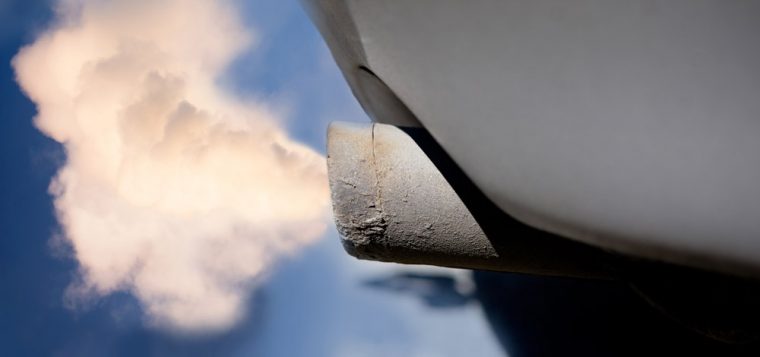What is Car Smog? And What Can You Do to Reduce it?

We’ve all heard of terms like smog, exhaust, and emissions, but what’s really coming out of your vehicle’s tailpipe? Here’s a look at what’s really inside that smoke.
Going Green Doesn’t Have to Mean Compromising on Power: Meet the GMC Hummer
The chemical composition of smog

Smog is a colloquial name for the noxious cocktail of airborne chemicals that are a byproduct of combustion. It’s made of carbon monoxide, hydrocarbons, oxides of nitrogen, and solid particles, like ash.
Carbon monoxide is a dangerous gas that’s both colorless and odorless. This hazardous emission is why you should never leave a car running in an enclosed space. Hydrocarbons come from fuel leaks, unburned fuel, lousy crankcase ventilation, and dirty motor oil. Oxides of nitrogen, commonly abbreviated as NOX, are spewed out when fuel combusts at extremely high temperatures, such as in high compression engines. Solid particles are what you’re seeing when a vehicle belches a gray or black cloud of smoke.
And while the bulk of these emissions come from the tailpipe, some come from fuel evaporation and crankcase vapors. When these compounds mix with sunlight and air, they can form new respiratory irritants like ground-level ozone.
Reducing your car’s smog output
Not everyone can feasibly make the switch to an EV — but that doesn’t mean you can’t work on cutting the smog output of your combustion-engine vehicle. Here are a few things you can do to help yourself breathe easier.
- Perform regular oil changes. Sludgy motor oil can contribute to your carbon output.
- Make sure the gasoline cap fits tightly — a loose cap will allow fuel vapors to escape into the air.
- Have your car checked for fuel line and engine issues, such as a leaky injector, a faulty pressure regulator, a failed ignition component, or a malfunctioning engine sensor. As an added bonus, fixing these problems will boost your performance and gas mileage, as well as extend the life of your car’s O2 sensor and catalytic converter.
- Make sure your vehicle’s tires are properly inflated. This can also boost your fuel economy.
- Change your car’s air filter regularly to cut back on carbon monoxide emissions. You can also reduce your car’s CO output by making sure it’s outfitted with properly functioning sensors for oxygen, coolant, throttle position, and manifold pressure.
- If your car has a busted catalytic converter or failed exhaust gas recirculation valve, it’ll put out excess NOX.
- Slash smog by making sure your car’s engine is in working order. Black smoke can be caused by oil burning in the combustion chamber.
Maintenance is Key: Tips for caring for your tires
For more tips on going green, check out our article on how to help your vehicle pass and emissions test.
Kimiko Kidd is a native Daytonian. She graduated from Wright State University with degrees in environmental science and sociology. She loves her trusty old Honda Civic, but dreams of owning a 1974 Ford Falcon XB with a custom paint job and a vintage Kawasaki Z1000. In her free time, Kimiko can be found watercolor-painting, baking muffins, collecting rocks, playing old-school Nintendo games, writing her novel, sewing stuffed animals, and cosplaying as her favorite Mad Max characters. See more articles by Kimiko.


